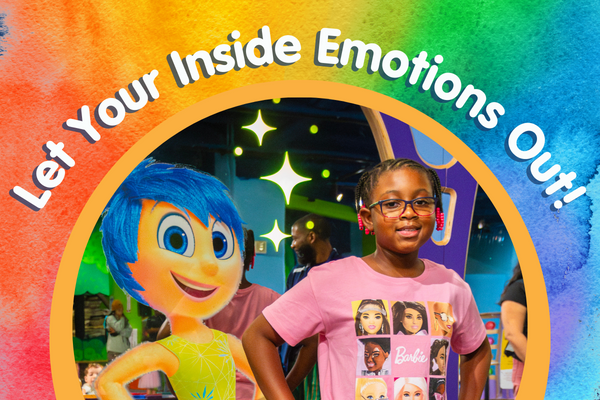Health & Wellness Fridays: Heartbeat Dance Party
Have you ever felt a thumping feeling in your chest after playing your favorite sport or game? That’s your heart pounding. Your heart is a muscle that sends blood through your arteries to provide oxygen and nutrients to the rest of your body. When you’re active, like when you run, jump, dance, or climb, your heart beats faster because the rest of your muscles need more oxygen than normal! The sound of your heartbeat thumping away is the sound of your heart making sure your body has enough oxygen to keep on running, jumping, dancing, and climbing.
The arteries that are closest to the skin are known as pulse points. That’s because it’s easy to find and measure your pulse there. Two of the easiest pulse points are on your wrist and on your neck. Today, we’re going to get our heart pumping, then learn how to measure our heart rate. Get ready for a heartbeat dance party!
Note: The average heart rate for a child is 90 beats per minute when not exercising. During exercise, their heart rate may increase to between 120 and 220 beats per minute.
Materials & Instructions
Stopwatch or timer – try using the one on your phone!
Paper
Something to write with
Good dance music (see kid-friendly playlist below)
STEP 1: Get comfortable! Sit down and take a few deep breaths. You’re about to take your starting pulse. Place two fingers either on your neck under the jaw or on your wrist near the bottom of your thumb. Can you feel your pulse? Grownups, you may need to help with this step.
STEP 2: Set a timer for 15 seconds (or have your stopwatch run for 15 seconds) and count how many times your heart beats within those 15 seconds. Multiple the number of times your heartbeat by 4. Grownups, you may need to help with multiplication. This is your resting heart rate. Your body doesn’t need extra oxygen right now.
STEP 3: It’s time to dance! Turn on some catchy tunes and dance your heart out for a few minutes. Jump, run, kick, breakdance, wave your arms, wiggle your nose. Get that heart rate pumping! Once you’re done, take your pulse again. This is your heart rate after exercising.
STEP 4: Do some stretches, take some deep breaths, or sit quietly for a few minutes. After you feel your heart rate slow down, measure your pulse again. How has it changed?
For older children, help them create a simple graph of how their heart rate changed with movement like the one shown here. Use the vertical line to represent heart rate; use the horizontal line to label the different steps we tried today – your resting heart rate, your heart rate after exercising, and your final heart rate.
Resources: heart.org | kidshealth.org
Vocab Words
Heart: A muscle that pumps blood through your arteries so that your body gets the oxygen and nutrients it needs.
Arteries: Arteries are tubes that carry blood from the heart to all parts of the body.
Pulse: Your pulse is the thump you feel from the blood flowing through your artery. Because the speed of your heartbeat determines how fast the blood flows through your artery, measuring the thump of your pulse is the same as measuring your heart rate!
Heart Rate: How fast or slow your heart is moving.


